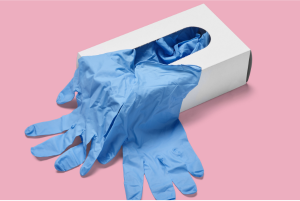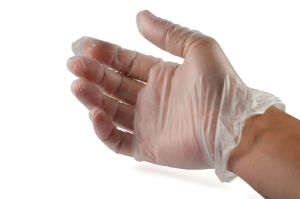Latex vs Nitrile vs Vinyl Gloves: Which One Offers the Best Dexterity?
When working in industries like food handling, commercial cleaning, or healthcare, dexterity and flexibility are just as important as protection. The wrong glove can cause hand fatigue, reduce grip, and slow your team down. In this blog, we compare latex, nitrile, and vinyl gloves to determine which type offers the best dexterity for different work environments across New Zealand.
Whether you're after tactile precision, comfort for extended use, or simply trying to understand the trade-offs, this glove comparison will help you make a smart, informed choice.
1. Latex Gloves – Natural Fit and Flexibility
Latex gloves are made from natural rubber, giving them a soft, elastic quality that conforms snugly to the hand.
Pros:
-
Exceptional tactile sensitivity
-
Comfortable for prolonged wear
Cons:
-
Potential allergen (latex sensitivity)
-
Not ideal for harsh chemical exposure
Best for: Food prep, patient exams, general cleaning
2. Nitrile Gloves – Strong and Sensitive
Nitrile gloves are synthetic alternatives to latex and are especially valued for their chemical resistance and strength, while still offering decent dexterity.
Pros:
-
Suitable for latex-sensitive users
-
Good overall flexibility and grip
Cons:
-
Slightly less tactile than latex
-
May feel stiffer during precise work
Best for: Medical handling, heavy-duty cleaning, janitorial work
3. Vinyl Gloves – Budget-Friendly but Limited Dexterity
Vinyl gloves are made from PVC and are the most economical option. They’re suitable for short-term, low-risk tasks, but lack the form-fitting qualities of latex or nitrile.
Pros:
Cons:
-
Low flexibility and loose fit
-
Limited dexterity and poor tactile feedback
-
Not recommended for tasks requiring fine motor control
Best for: Basic food service, light cleaning, low-contact handling
Comparison Table: Glove Dexterity & Fit Overview
| Feature | Latex Gloves | Nitrile Gloves | Vinyl Gloves |
| Flexibility | High | Moderate to High | Low |
| Dexterity | Excellent | Very Good | Fair |
| Tactile Sensitivity | High | Moderate to High | Low |
| Fit | Snug | Snug | Loose |
| Allergen Risk | Yes (latex sensitivity) | None | None |
| Cost | Moderate | Higher | Low |
Summary: Which Gloves Offer the Best Dexterity for NZ Workplaces?
If your team requires fine motor skills and precise control — such as in food presentation, dental care, or surface sanitation — latex gloves are the top performer. However, for environments with potential allergies or chemical exposure, nitrile gloves offer a close second with added durability.
Vinyl gloves, while cost-effective, are best suited to low-risk tasks where dexterity isn’t a primary concern.
FAQ
Q: Which gloves are best for fine detail work?
A: Latex gloves provide the highest dexterity and tactile sensitivity.
Q: What if someone has a latex allergy?
A: Nitrile gloves are the best alternative, offering flexibility without allergenic risk.
Q: Are vinyl gloves suitable for commercial kitchens?
A: They can be used for low-risk handling but are not recommended for tasks requiring precision or grip.
Q: Which glove lasts the longest?
A: Nitrile gloves generally offer the best durability and puncture resistance.
Need help choosing the right gloves for your NZ workplace?
Explore Insinc’s full glove range — including latex, nitrile, and vinyl options — trusted by food service, healthcare, and cleaning professionals nationwide.
Posted: Monday 13 October 2025





